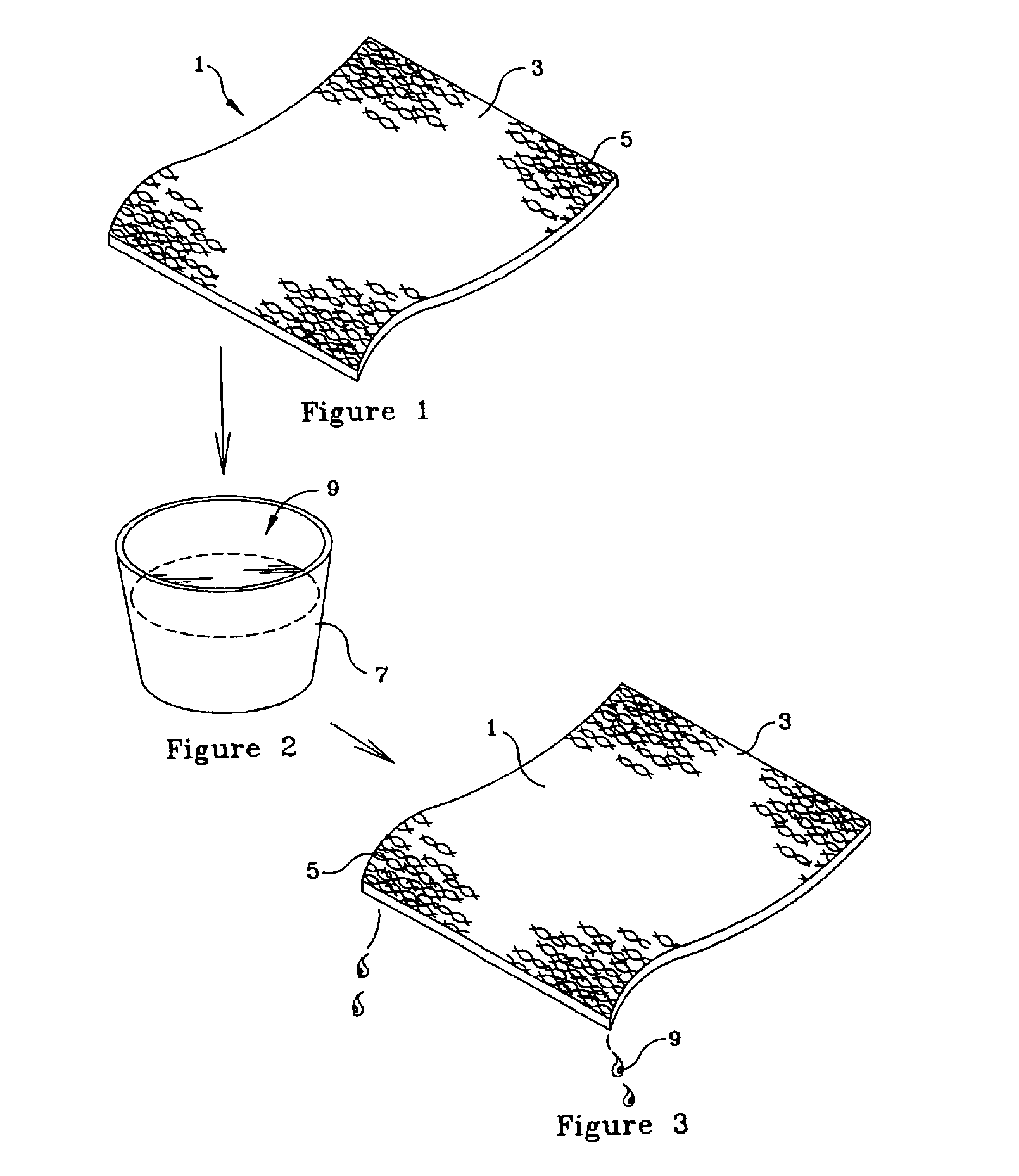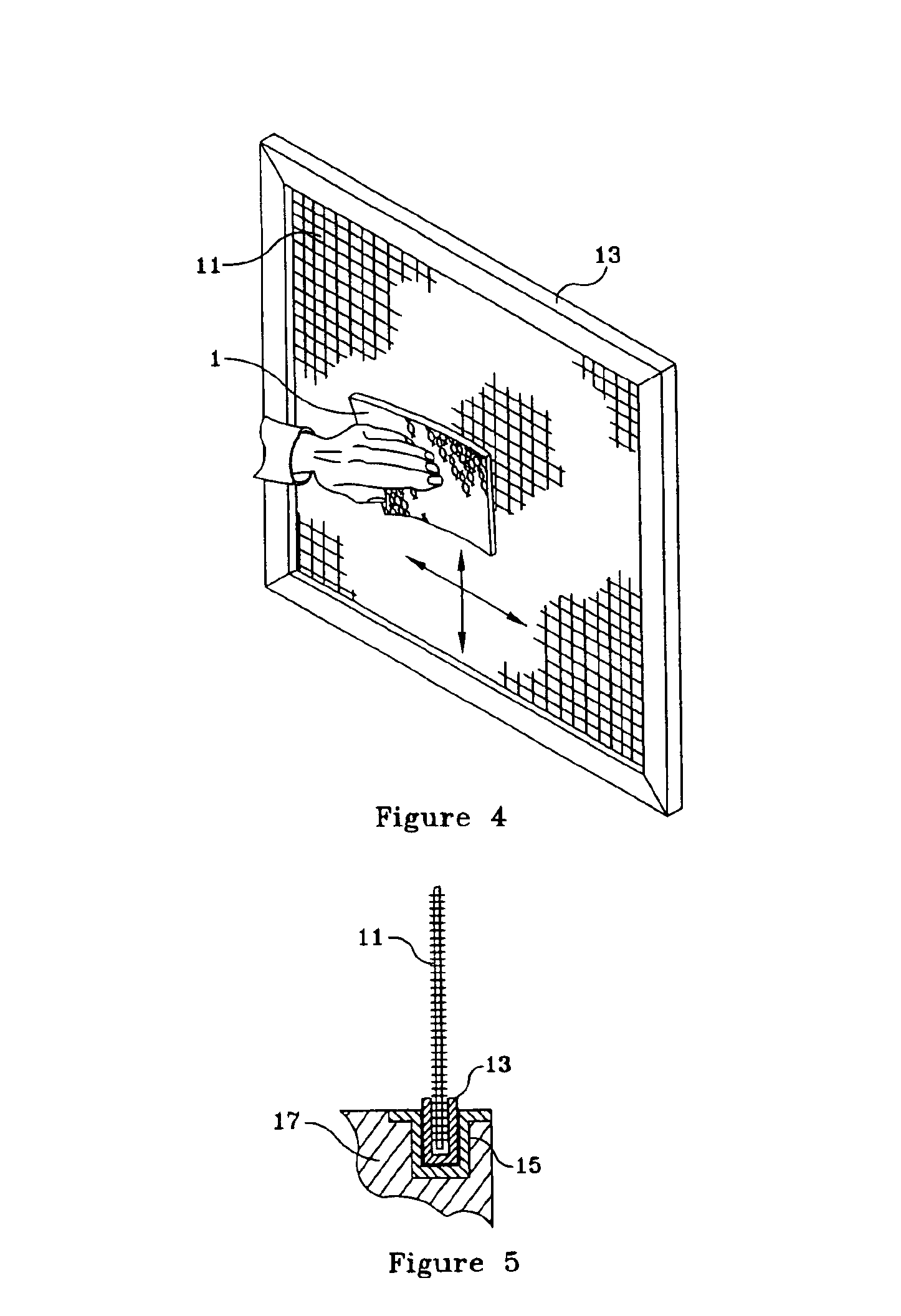Screen cleaning device and method of using
a cleaning device and screen technology, applied in the cleaning industry, can solve the problems of affecting the finish of the furniture, the inability to clean the screen, and the use of many products,
- Summary
- Abstract
- Description
- Claims
- Application Information
AI Technical Summary
Benefits of technology
Problems solved by technology
Method used
Image
Examples
Embodiment Construction
Turning now to the drawings, wherein elements are identified by numbers and like elements are identified by like numbers throughout the four figures, FIG. 1 shows the screen cleaning tool 1 of this invention to comprise a thin sheet 3 of fiberous material made by a process including the steps of spin-matting plastic-based fibers 5 into a thin layer that includes spraying them, in a variety of orientations, on a releasable substrate, over-spraying the sprayed layer with a curable adhesive, pressing the layer flat and holding it flat and under slight pressure while the curable adhesive is cured. This is a typical process by which wipes are manufactured except that the fibers are laid in north-south, east-west, orthogonal direction. Specifically, the type of plastic used in this invention is a polypropylene / polyethylene / cellulose / rayon blended fiber, which is a broader range of plastic than polyester / rayon fibers, and the fibers are subjected to a “spunlace” or spin-matting operation. ...
PUM
| Property | Measurement | Unit |
|---|---|---|
| size | aaaaa | aaaaa |
| size | aaaaa | aaaaa |
| size | aaaaa | aaaaa |
Abstract
Description
Claims
Application Information
 Login to View More
Login to View More - R&D
- Intellectual Property
- Life Sciences
- Materials
- Tech Scout
- Unparalleled Data Quality
- Higher Quality Content
- 60% Fewer Hallucinations
Browse by: Latest US Patents, China's latest patents, Technical Efficacy Thesaurus, Application Domain, Technology Topic, Popular Technical Reports.
© 2025 PatSnap. All rights reserved.Legal|Privacy policy|Modern Slavery Act Transparency Statement|Sitemap|About US| Contact US: help@patsnap.com



